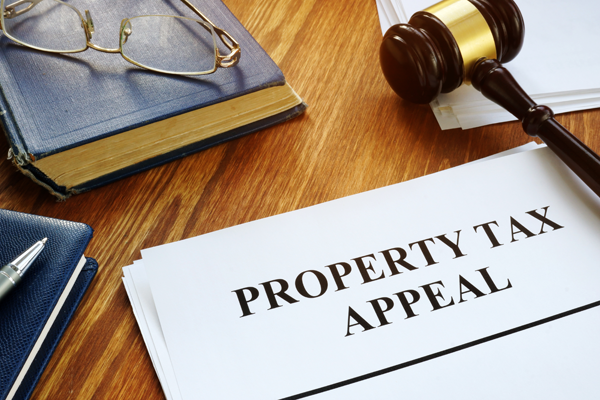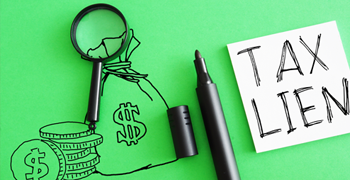Property taxes are a vital funding source for local governments across the United States. This is particularly true in California. This robust and intricate property taxation system in the Golden State is essential. It finances services and infrastructure that keep communities running smoothly, safe, and thriving.
 Property tax is a charge on real estate. It's calculated based on the property's value - a figure derived from an assessment process. This assessed value then forms the foundation for applying the tax rate. Yet, it's important to note that California saw a significant shift in its property tax landscape with the passage of Proposition 13 in 1978.
Property tax is a charge on real estate. It's calculated based on the property's value - a figure derived from an assessment process. This assessed value then forms the foundation for applying the tax rate. Yet, it's important to note that California saw a significant shift in its property tax landscape with the passage of Proposition 13 in 1978.
Before Proposition 13, property taxes in California were based on the property's current market value, leading to fluctuating tax bills year to year. However, Proposition 13 fundamentally altered this system. It capped property tax rates at 1% of the property's assessed value and restricted increases in assessed value to a maximum of 2% per year, subject to certain restrictions.
Example: Imagine you bought a house in California in 1990 for $100,000. By 1992, due to a real estate boom, the market value of your home doubled to $200,000. Under the previous property tax system, your tax bill could also have doubled, as it was primarily based on the property's market value.
However, Proposition 13 was passed in 1978, fundamentally altering this system. Instead of your tax bill being based on the current market value, it became based on the assessed value of your property at the time of purchase, subject to a maximum increase of 2% per year. The tax rate was also capped at 1%.
In this scenario, under Proposition 13, your property tax for 1992 would be based on an assessed value of $102,000 (your 1990 purchase price of $100,000 increased by 2%). The tax rate of 1% would be applied on the $102,000, leading to a tax bill of $1,020, significantly less than what it could have been under the old system.
Proposition 13 provided a predictable and manageable property tax system by capping the tax rate and limiting the yearly increases in assessed value, despite fluctuations in the real estate market.
Upon the sale of a property, the property is reassessed at its current market value, and this new assessed value becomes the base for future property taxes. This means long-term property owners often pay significantly less in property taxes than recent buyers of comparable properties.
The effects of Proposition 13 are multifaceted and profound. Neighbors with similar properties can pay drastically different taxes if they purchase their homes at different times, leading to questions of equity and fairness.
drastically different taxes if they purchase their homes at different times, leading to questions of equity and fairness.
On a broader scale, Proposition 13 has impacted public finance in California. By capping property taxes, it has constrained the revenue stream for local governments, leading to a greater reliance on other revenue sources, such as sales and income taxes.
Proposition 13 is a landmark measure that continues to shape California's property tax system. Understanding its mechanisms and implications is key to comprehending the dynamics of property taxation in the state. Despite its age, the discussions around its equity, efficiency, and impact on public finance remain as relevant today as when it was first enacted.
While Proposition 13 limits yearly increases in a property's assessed value,certain events may trigger a reassessment. The two primary events are a change in ownership and the completion of new construction.
When a property changes hands, the county assessor typically reassesses it at its current market value, which becomes the new base year value. This reassessment can result in significant property tax increases if the property's market value at the sale is considerably higher than its previously assessed value.
New construction can also trigger a reassessment. However, it's important to note that only the new construction is reassessed, not the entire property. For instance, if a property owner adds a second story to a home, only the addition will be reassessed and added to the existing base year value of the property.
Exceptions to reassessment exist, such as certain parent-child and grandparent-grandchild property transfers, where the property 's assessed value can be maintained despite the change in ownership.
A property tax bill in California encompasses several elements. The most consistent aspect is the 1% general tax, often called the '1% rate'. This rate applies uniformly across the state. However, the total property tax bill can exceed 1% of a property's assessed value due to voter-approved 'over-1%' taxes. These are usually approved for financing specific local projects or repaying local general obligation bonds.
Additionally, many property owners are subject to 'direct levies,' charges for services or benefits that provide value to the property, such as water, sewage, or refuse collection. These will vary by location.

Understanding how property taxes are calculated in California can help anticipate tax obligations and better manage financial planning. Any reader seeking to understand property taxes better should know how property taxes are calculated in California and the main two factors influencing the property tax payment amount: the assessed value and the tax rate.
At its core, the calculation of property taxes in California involves two primary factors: the assessed value of the property and the tax rate.
Thus, the formula to calculate property taxes can be represented as follows:
Property Tax = Assessed Value x Tax Rate
However, this is an oversimplification. While the basic tax rate is 1%, additional taxes, often called "bond rates" or "voter-approved indebtedness," may be added to fund local services and improvements. These can vary significantly from one locality to another.
Let's break down the property tax calculation in a step-by-step process - if you are one of our real estate license school I'm hoping you remember the topic from your section on Taxation!
Calculate Total Property Tax: The total property tax due for the year would be the sum of the basic tax and any voter-approved indebtedness.
Property taxes are a significant financial obligation for property owners in California. The payment process can vary slightly by county, but it is straightforward and offers several convenient options.
One of the most convenient and quickest methods for paying property taxes is online. Most county tax collector's offices in California have an online portal that allows taxpayers to pay their property taxes electronically.
To pay online, you'll need to visit your county's tax collector's website. You will typically find an option to search for your property by your address or your Assessor 's Parcel Number (APN), a unique property identifier. Once you have located your property, you can view the amount due and make a payment.
Most counties allow payments directly from a checking or savings account; some even accept credit card payments. However, a convenience fee may be charged if you pay with a credit card.
If you prefer to mail your payment, you can send a check or money order made payable to your county's tax collector. The payment should be mailed to the address indicated on your tax bill. To avoid penalties, make sure the payment is postmarked on or before the tax due date.
When mailing your payment, you should include the payment stub from your tax bill to ensure the payment is applied to the correct property. If you don 't have a stub, write the APN or other unique identifier on the check or money order
In-person payments are another option. This typically involves visiting your county tax collector's office and paying by check, money order, cash, or sometimes credit or debit card. Remember that office hours vary; some offices may have restricted in-person services. Therefore, checking the office's current operating status before your visit is advisable.
Some counties may offer additional payment options, such as payment drop boxes or phone payments. In addition, many counties provide installment payment plans for those who cannot afford to pay their entire tax bill at once.
Regardless of your chosen method, paying your property taxes on time is crucial to avoid late penalties. Property tax due dates are typically December 10th for the first installment and April 10th for the second installment. The counties send out bills in the fall, but ultimately, it is the property owner's responsibility to ensure timely payment.
Despite its intricacies, the property tax system in California has crucial implications. It finances important local public services, from education and public safety to infrastructure maintenance and health and human services. Its impact resonates through the quality of life experienced by California residents.
 In essence, the property tax system in California represents an interplay between a stable source of local government revenue and the principles of voter control, fairness, and local benefit. While complex, understanding this system is essential for California residents to navigate their property-related financial responsibilities and to comprehend the pivotal role property taxes play in sustaining and enhancing local communities.
In essence, the property tax system in California represents an interplay between a stable source of local government revenue and the principles of voter control, fairness, and local benefit. While complex, understanding this system is essential for California residents to navigate their property-related financial responsibilities and to comprehend the pivotal role property taxes play in sustaining and enhancing local communities.
Property taxes represent a fundamental revenue stream for local governments, essential in facilitating many public services that directly benefit communities.
A sizeable portion of property tax income is allocated towards the education sector, supporting public schools ranging from kindergarten to community colleges. The funding is utilized to cover a broad spectrum of needs, such as teacher salaries, maintenance of facilities, acquisition of textbooks, technological tools, and other educational resources.
Property taxes also substantially contribute to public safety by financing local police departments, fire services, and emergency responses. These funds are earmarked for costs such as remuneration for officers and firefighters, procurement of necessary equipment, and upkeep of police and fire stations.
Local infrastructure and public works also significantly benefit from property tax revenue.
Governments leverage these funds to maintain and enhance public infrastructure, which includes roads, bridges, public transit systems, water and sewer systems, and public buildings. Routine maintenance, major repairs, and new construction projects are all underpinned by property tax income.
Moreover, property taxes finance vital health and human services local governments provide. Such services might encompass public health initiatives, mental health services, food assistance programs, and support for the elderly, contributing to the community's overall well-being.
Public parks, community centers, sports facilities, and other recreational spaces are other beneficiaries of property tax funds. Revenue is used for diverse purposes, from landscaping and facility upkeep to organizing community events and activities, ensuring these spaces are well-maintained and inviting.
Libraries, valuable community hubs offering a wealth of resources, from books and movies to computer access and educational programs, are often kept operational and well-maintained using property tax revenue.
Finally, property taxes also underpin the routine operations of local governments. These operations encompass salaries for government employees, procurement of office supplies, technological costs, and other miscellaneous expenses associated with smoothly running local government departments and offices.
What Happens If I Don 't Pay My Property Taxes?
When it comes to property taxes in California, the law is clear: they must be paid in a timely manner to avoid severe penalties and potentially devastating consequences. Property taxes are:
Thus, the state has mechanisms in place to enforce payment. Here's what you need to know about what happens if property taxes are not paid in California:
In California, property taxes are paid in two installments. The first installment is due November 1st and is considered late unless paid by December 10th. The second installment is due February 1st and is considered late unless paid by April 10th.
When these due dates are missed, a 10% late penalty is added to the unpaid amount for each installment. If you fail to pay by the end of the fiscal year on June 30th, an additional 1.5% per month (18% per year) is added as a delinquency charge, starting July 1st.
If taxes remain unpaid at the end of the fiscal year, the county tax collector has the authority to place a lien against the property. A tax lien means the government has a legal claim on your property due to unpaid taxes. This lien takes priority over other liens or claims on the property.
The tax sale is the most severe consequence of not paying property taxes in California. Suppose your property taxes remain unpaid for five years. In that case, the county tax collector has the right to sell the property to recover the unpaid taxes, accrued interest, and costs associated with the sale.
This process, known as a tax sale, usually takes the form of an auction. The property is sold to the highest bidder, who then takes ownership, free of any previous debts or liens. The previous owner loses all rights to the property.
At the end of the day, failing to pay your property taxes in California can have severe financial and legal consequences. If you need help paying your property taxes, contacting your county tax collector's office is important. They can provide information about potential payment plans, tax relief programs, or other options to help you avoid these consequences.
Property taxes are a foundational pillar in California's economic landscape, crucial in funding local public services and infrastructural projects. As we've examined, the evolution of property taxation systems from ancient times to modern-day California has always been intertwined with the pressing socioeconomic issues and public finance requirements of their respective periods.
Understanding California's property tax system, especially in light of Proposition 13, is vital for any property owner or prospective buyer. By comprehending how taxes are assessed, how they can fluctuate with changes in ownership or construction and the composition of a tax bill, homeowners can better anticipate their financial obligations and plan accordingly. Additionally, with the knowledge of how to appeal a property tax-assessed value, homeowners can ensure that their property is accurately valued and well-rested.
In a broader perspective, the discussions revolving around property taxation, particularly Proposition 13, underscore the complex balance between equitable tax, property owners' financial security, and the funding needs of local governments. As Californians, being informed about these dynamics equips us to engage more constructively in public discussions around potential reforms or modifications in the system.
Regarding property taxes, knowledge is not just power - it's savings, planning, and peace of mind. As California continues to evolve, so will its property tax system. It is crucial to stay informed and proactive in understanding how this facet of property ownership impacts our financial situation and our collective community welfare.
As always, if you want to learn more about getting your real estate license or attending our real estate school, visit www.adhischools.com or call us at 888-768-5285.
Love,